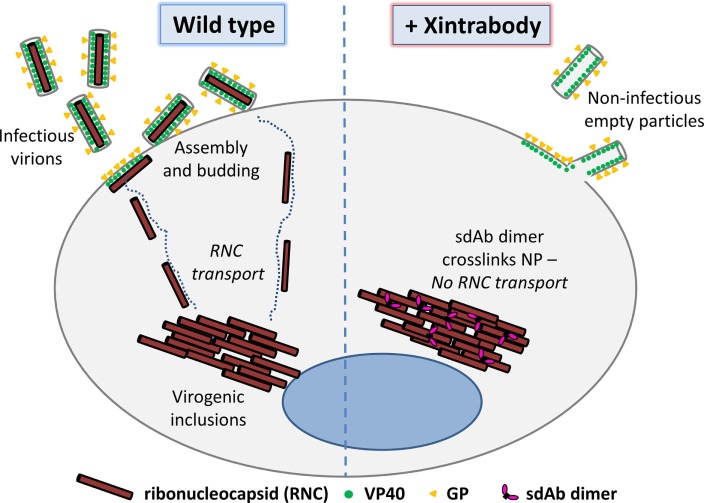Figure 1.
Overall hypothesis of the approach showing that crosslinking a viral structural protein within the cell using a multimeric single-domain antibody (sdAb) will impede viral replication by disrupting the orderly assembly of infectious virus particles (virions). The dimeric sdAb can be introduced into the uninfected target cell or virus-infected cell via endogenous gene expression, gene delivery, protein transfection, or protein transduction to mediate the antiviral activity. Here, we focus on utilizing Marburgvirus and Ebolavirus nucleoprotein (NP) as our model target since we have sdAb to hand that bind polyvalent assemblies. Our working theory is that our sdAb dimers or Xintrabodies are crosslinking NP epitopes among ribonucleocapsids (RNCs) within viral factories and inhibiting their transport to the cell membrane for further assembly into virions. It should be noted that other antigens involved in assembly may be equally effective provided suitable sdAb are available, although targeting antigens that occur in viral factories may be advantageous owing to high local concentrations. The overall approach may be applicable to many other viruses and scaffolding components and leverages relatively small amounts of minute 30 kDa dimeric sdAb crosslinking MDa sized targets to impede productive viral replication.

